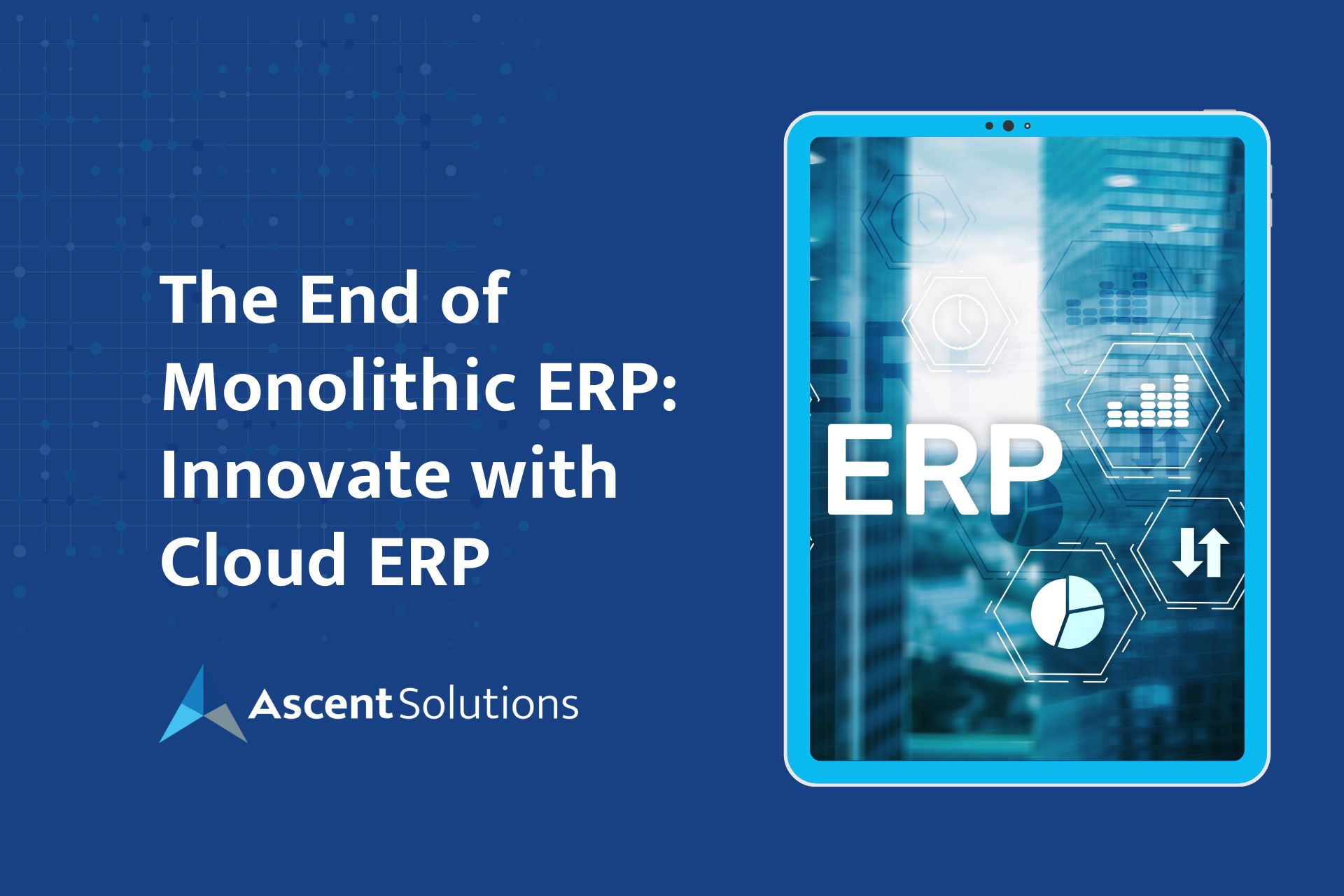The End of Monolithic ERP Innovate with Cloud ERP
View All: Resources

The main criticisms of ERPs are often referred to as rigidity, high costs, inability to evolve rapidly at the pace of business, and heavy and aging interfaces. All Inclusive or “Monolithic” enterprise resource planning systems have become static and cannot adapt fast enough to accommodate the changing business world. Customization within on-premise deployments can become a huge bottleneck as companies have to design workflows around their ERPs limitations costing them time, money, and overall competitiveness.
Challenges of Monolithic ERP
The assumption that one complete system will be a comprehensive solution for all businesses is impractical. While monolithic ERP systems may be the right choice for some well established enterprise businesses, it is not a one size fits all solution. High growth businesses, which are often mid size and small businesses (SMBs), need a solution that is flexible and can scale with their needs.
In 2000, for example, Nike decided to implement an ERP system to forecast the market demands and take on the new millennium with technology. February 2001, Nike Corporation generated $97.4 million in profits, which was around $48 million below the forecast for that quarter. This was due to a bug in the supply chain software installation according to Nike. The failure was traced to an order management module and negatively affected the company for over a year. Despite spending $400 million to get the ERP suite in place, Nike lost over $100 million in sales, forfeited 20% market share, and faced numerous lawsuits. The bug was eventually fixed in late 2000. Coupled with overhead costs, reliance on one vendor, lack of integration with modern business intelligence, monolithic ERPs were facing issues too big to be ignored.
Innovate with Cloud ERP
Many high-growth companies are taking an innovative approach to managing their technology landscape using best-of-breed applications. This approach “is the strategy of selecting the best product that will meet all of your business requirements. With this approach, your business will select the best system—typically in its referenced niche or category—and it will perform a specialized function better than an integrated system.”
Ascent Solutions has helped customers move away from on-premise, monolithic ERP systems into cloud ERP with this flexible attitude. The savvy Salesforce customer does not need a ton of hand-holding while implementing a native AppExchange solution around aspects of ERP. We have honored that mentality by making the support team readily available and adding a knowledge base to our website for self-serve customer support.
What is the upside to this approach of moving from on-premise legacy systems or spreadsheets to the cloud? One of our customers made the strategic decision to unravel their monolithic ERP system and move forward with a best-in-class approach. This customer is now a legitimate, well-known brand, in large part because of its cloud ERP architecture strategy. With Ascent Solutions extending the value of Salesforce for inventory control, order management, demand planning, and reverse logistics companies are able to leverage best-in-class applications as they scale their business.
Learn more about Ascent Solutions’ customers in this blog post.
Follow Us
Have questions? We can help!
Ascent Solutions will provide you with ultimate customer service, attending to all of your needs promptly and efficiently. Our goal is to serve as your partner so that all of your needs are met in accordance with your schedule and align with your budget.
- Call Us: 908-981-0150
- Ascent: Contact Us
Related Posts
Categories
Why Ascent?
We are distribution and manufacturing technology enthusiasts that understood the term “ERP” was oversold and under delivered. We designed a flexible platform to ensure that we are able to adapt and evolve with businesses from the startup to enterprise level yet keep our offering affordable.


